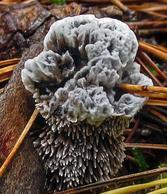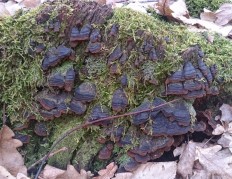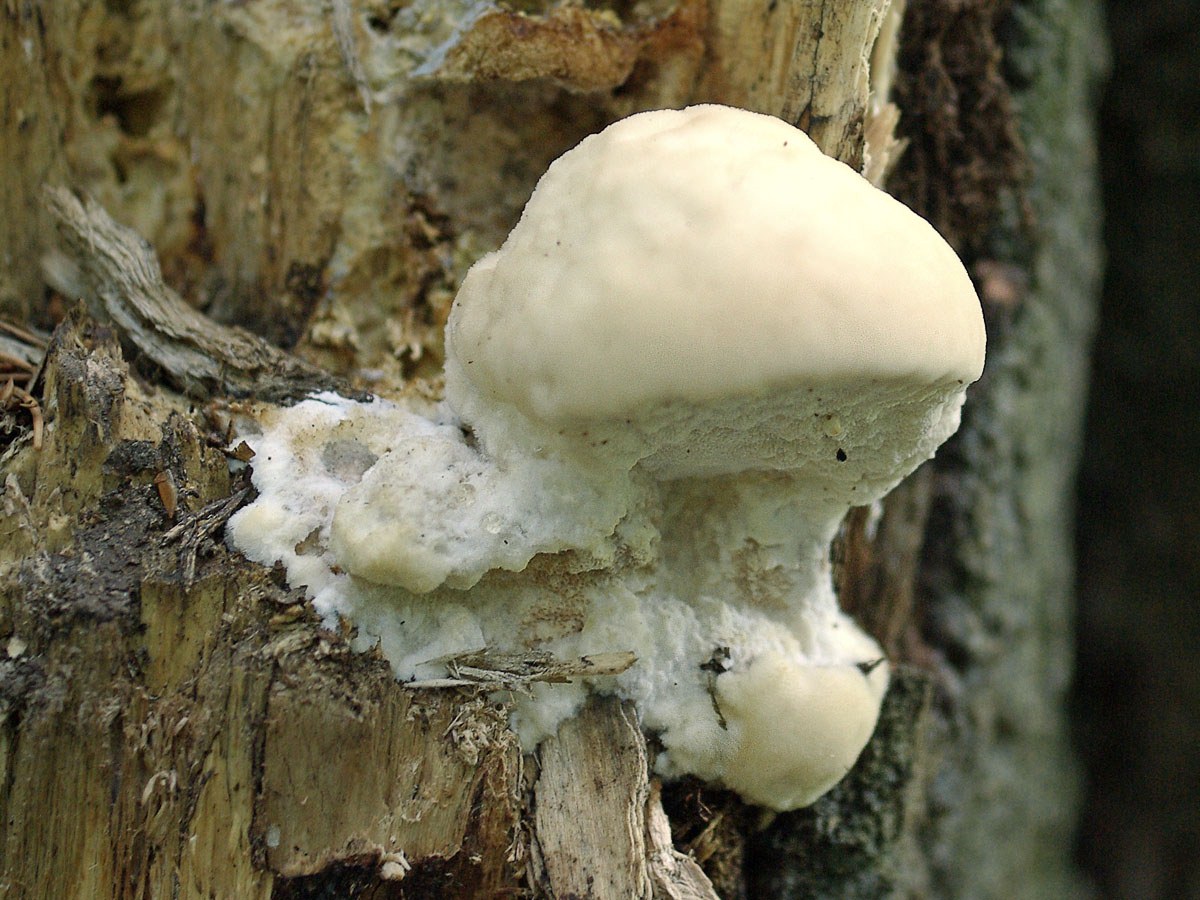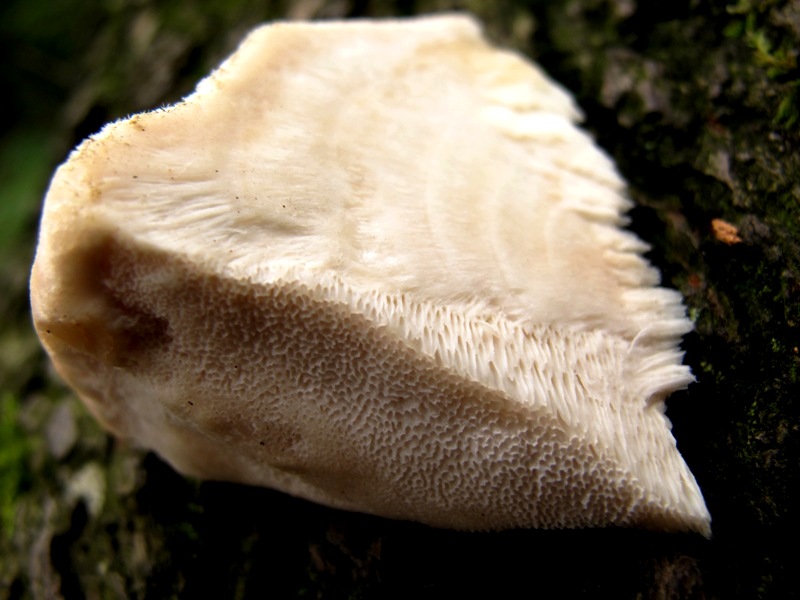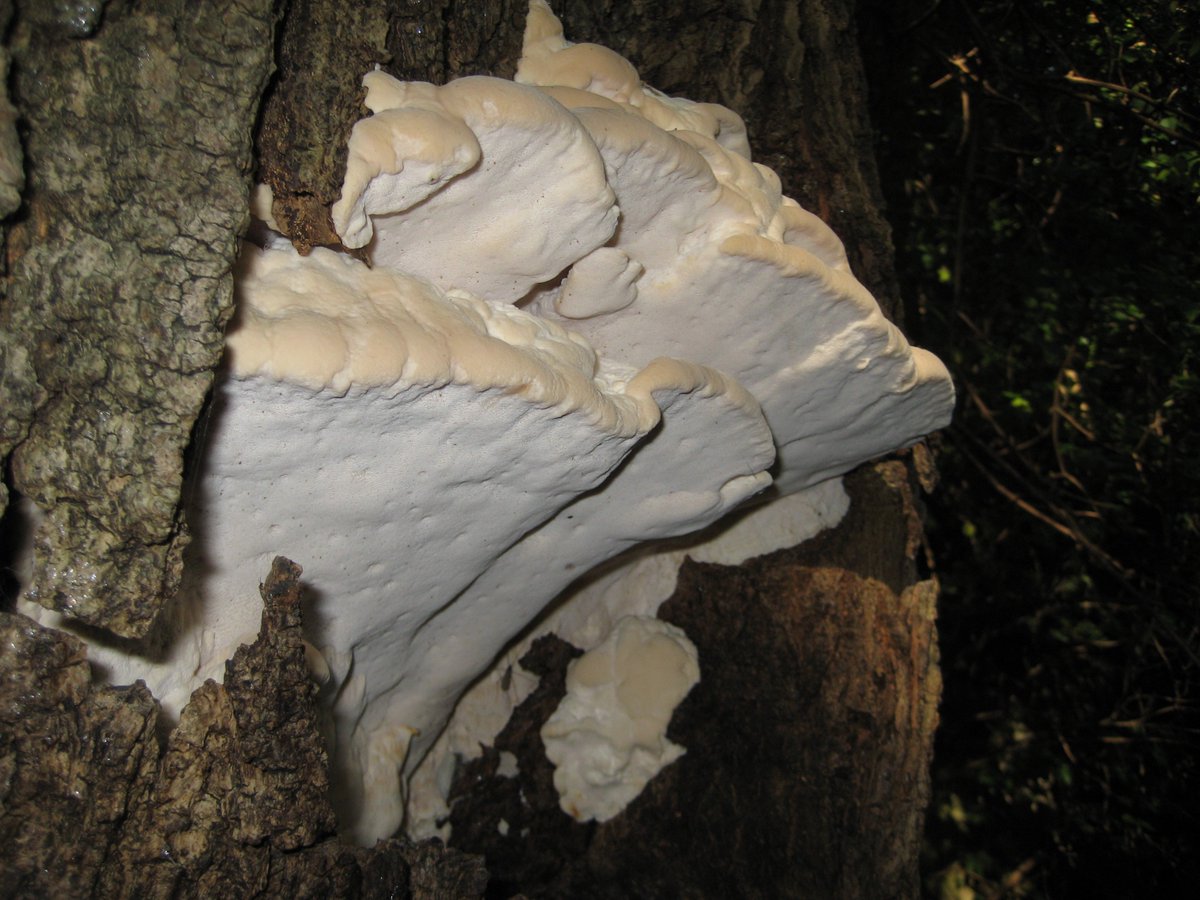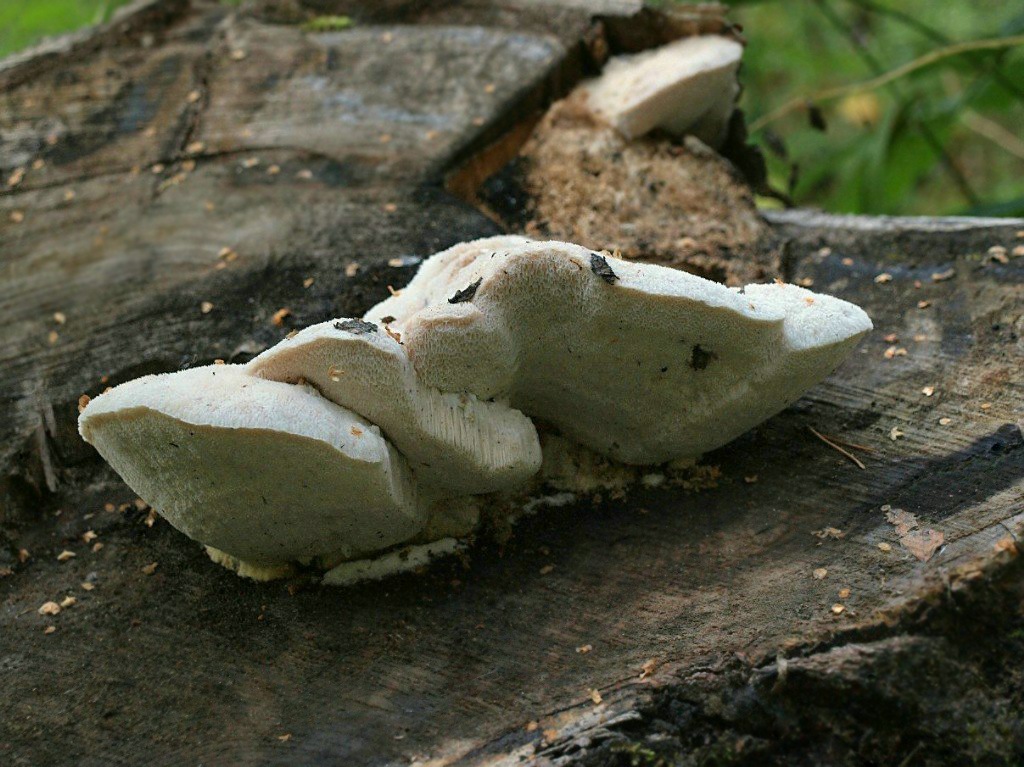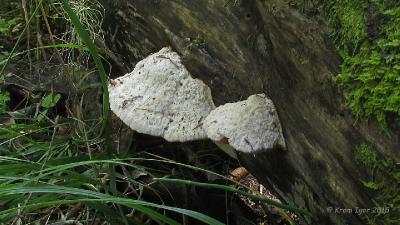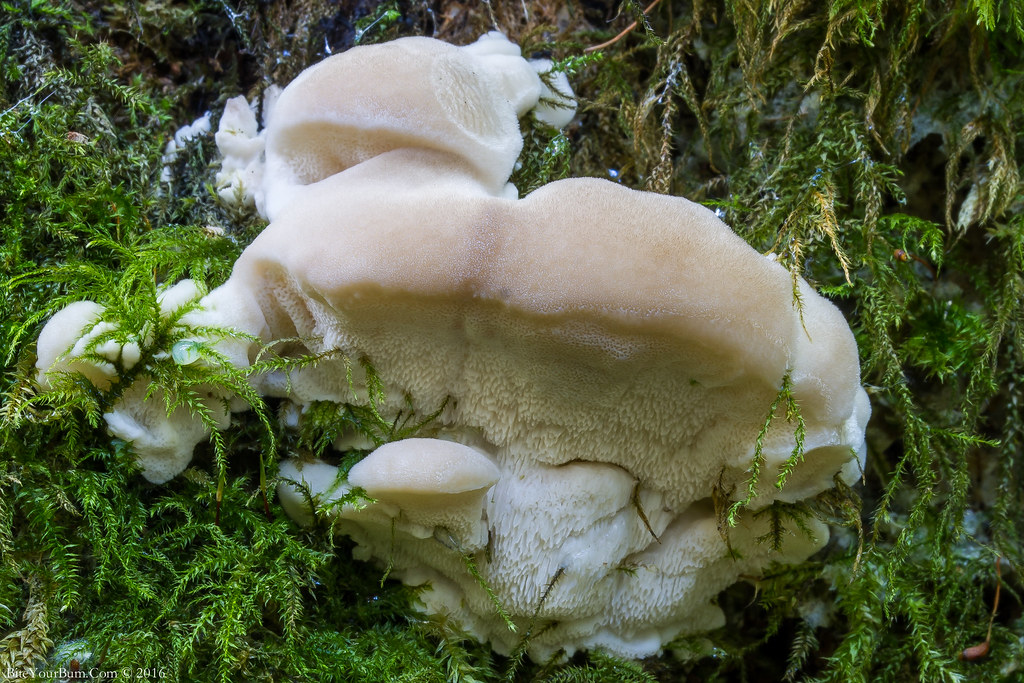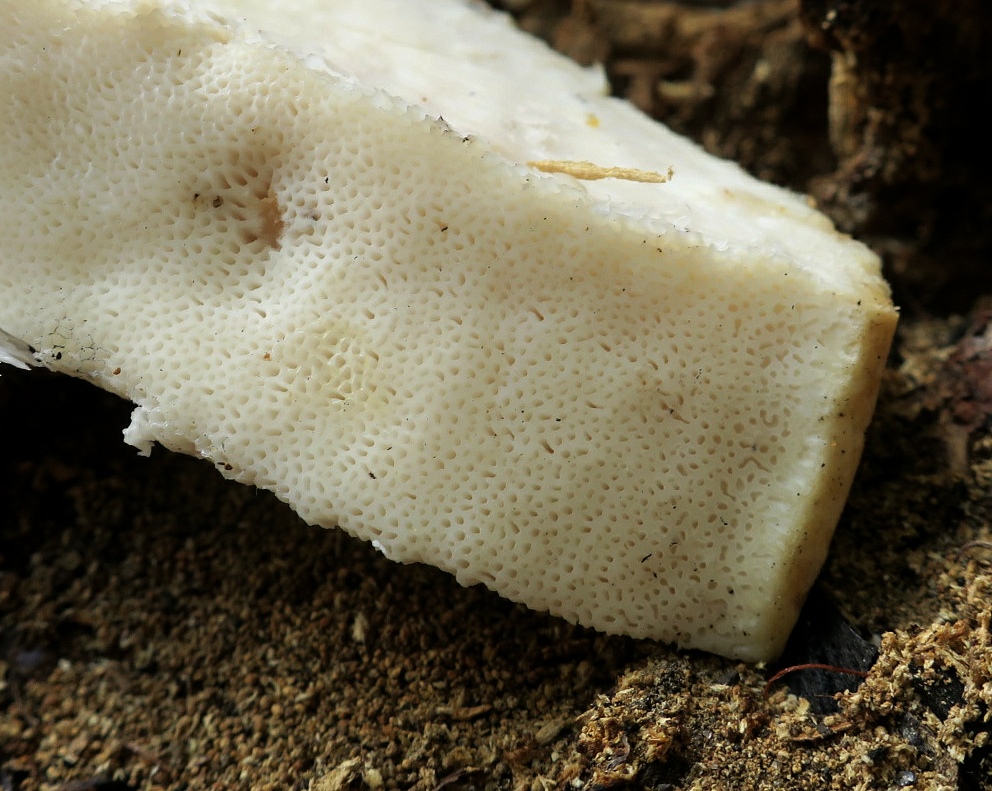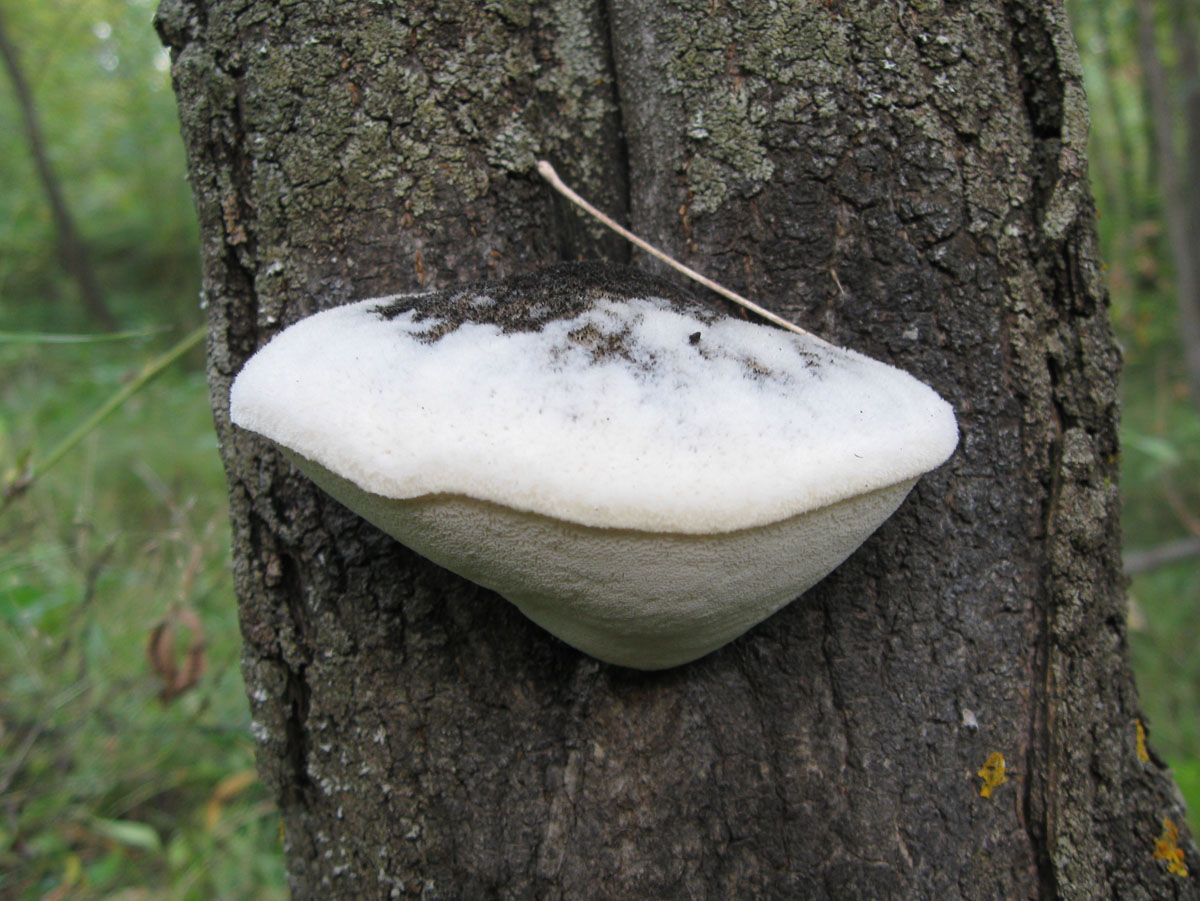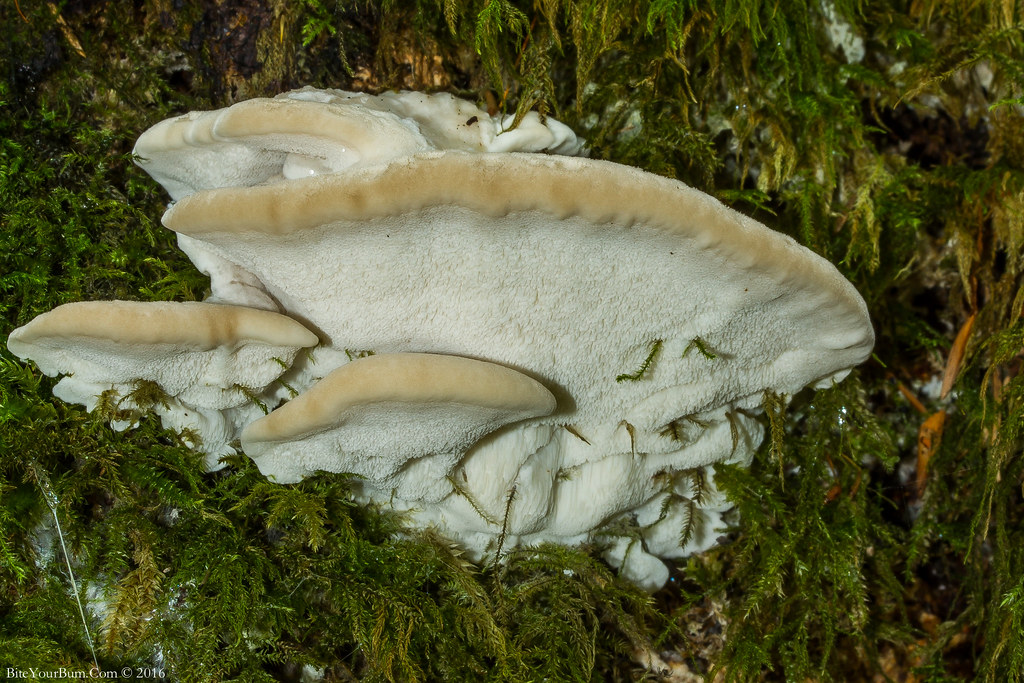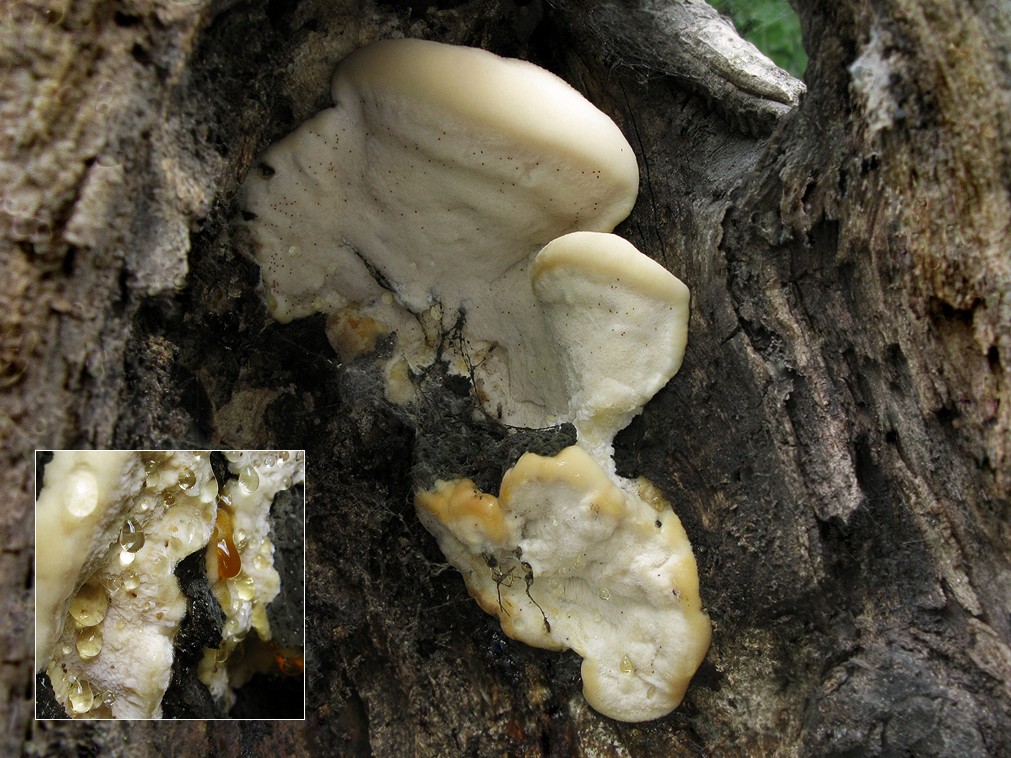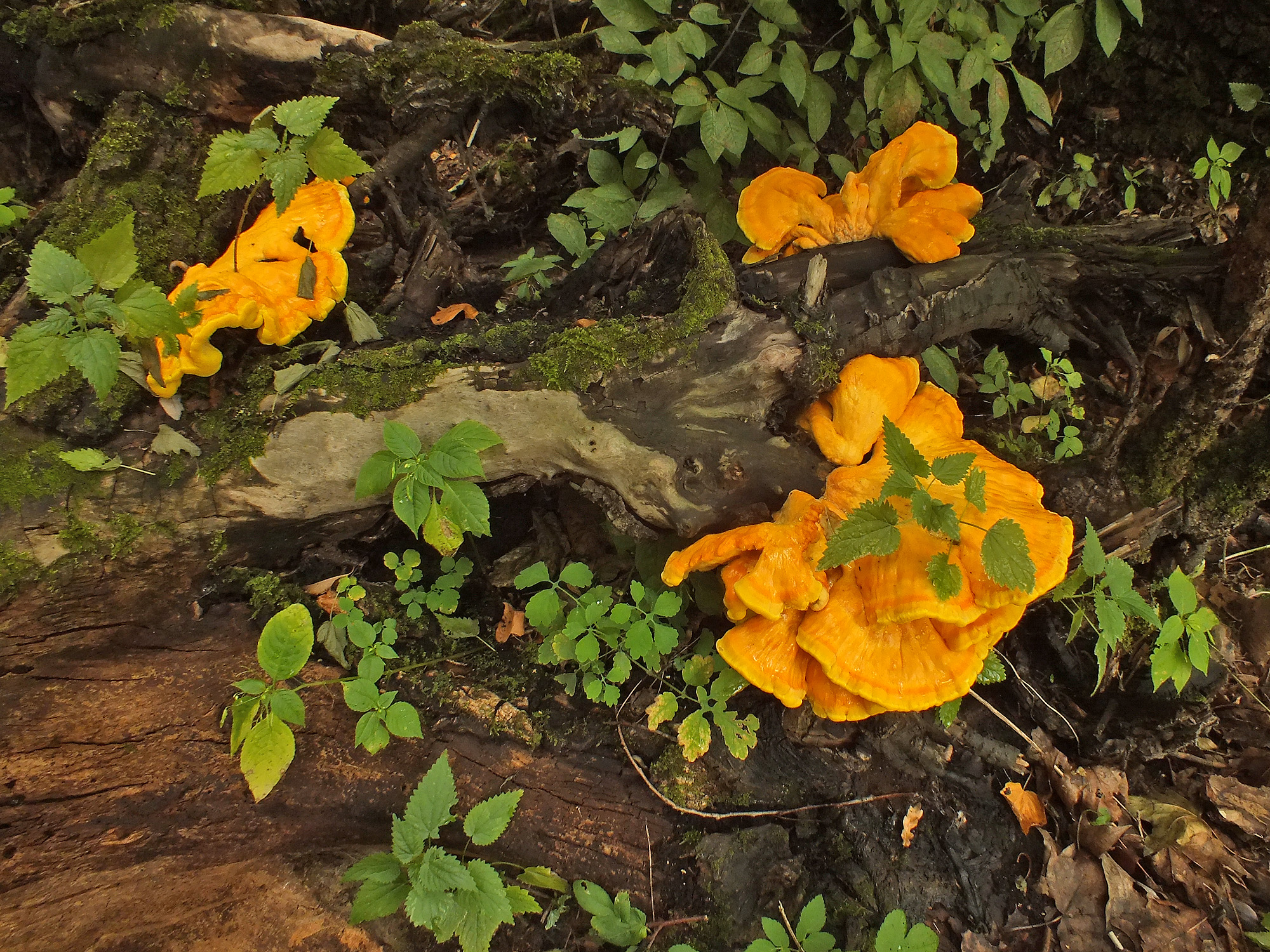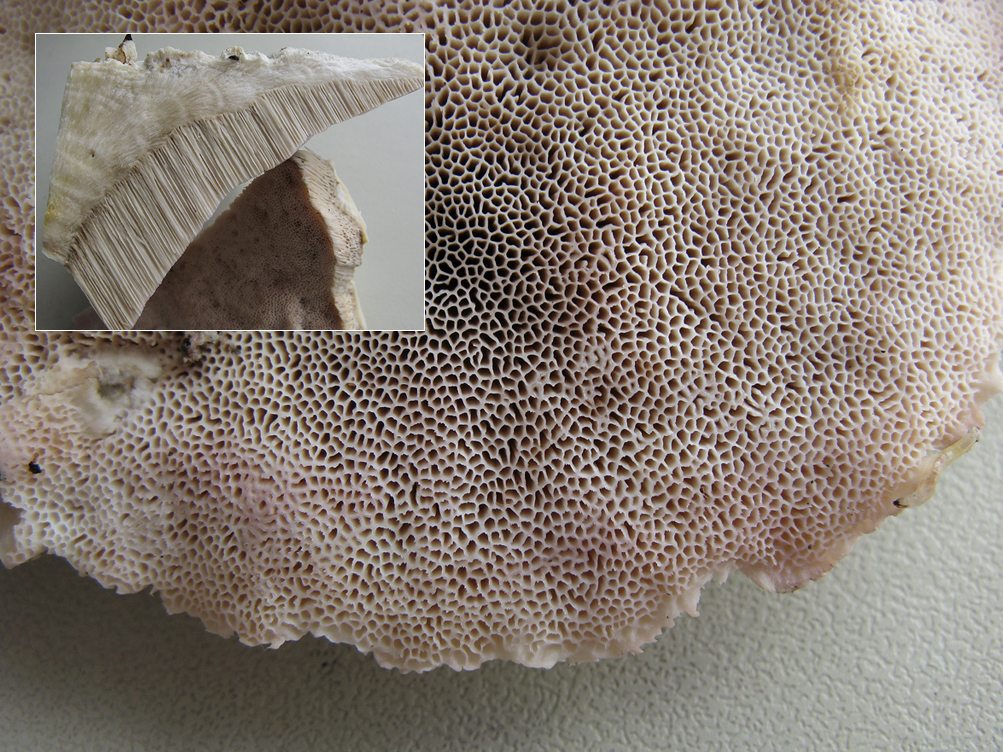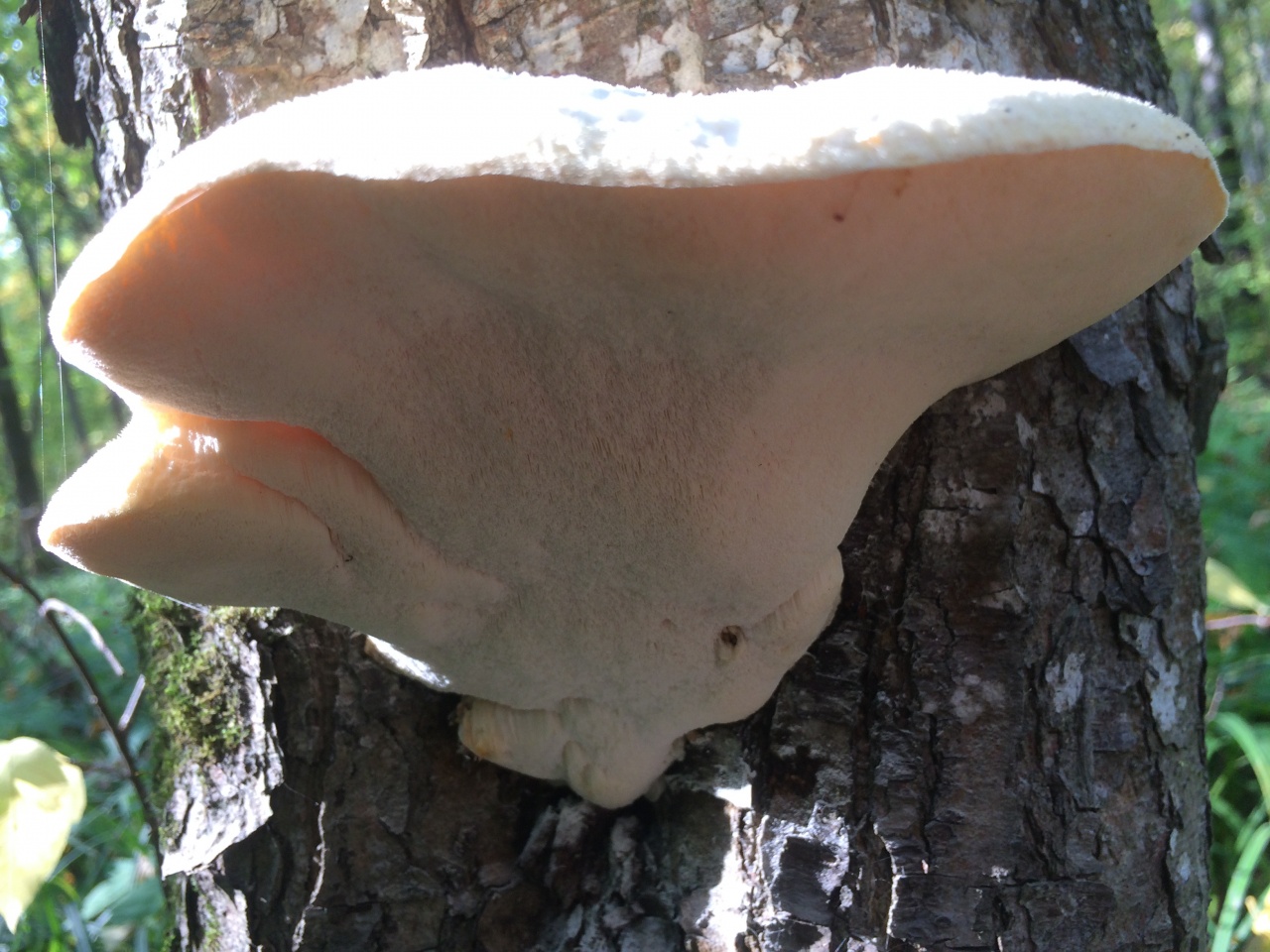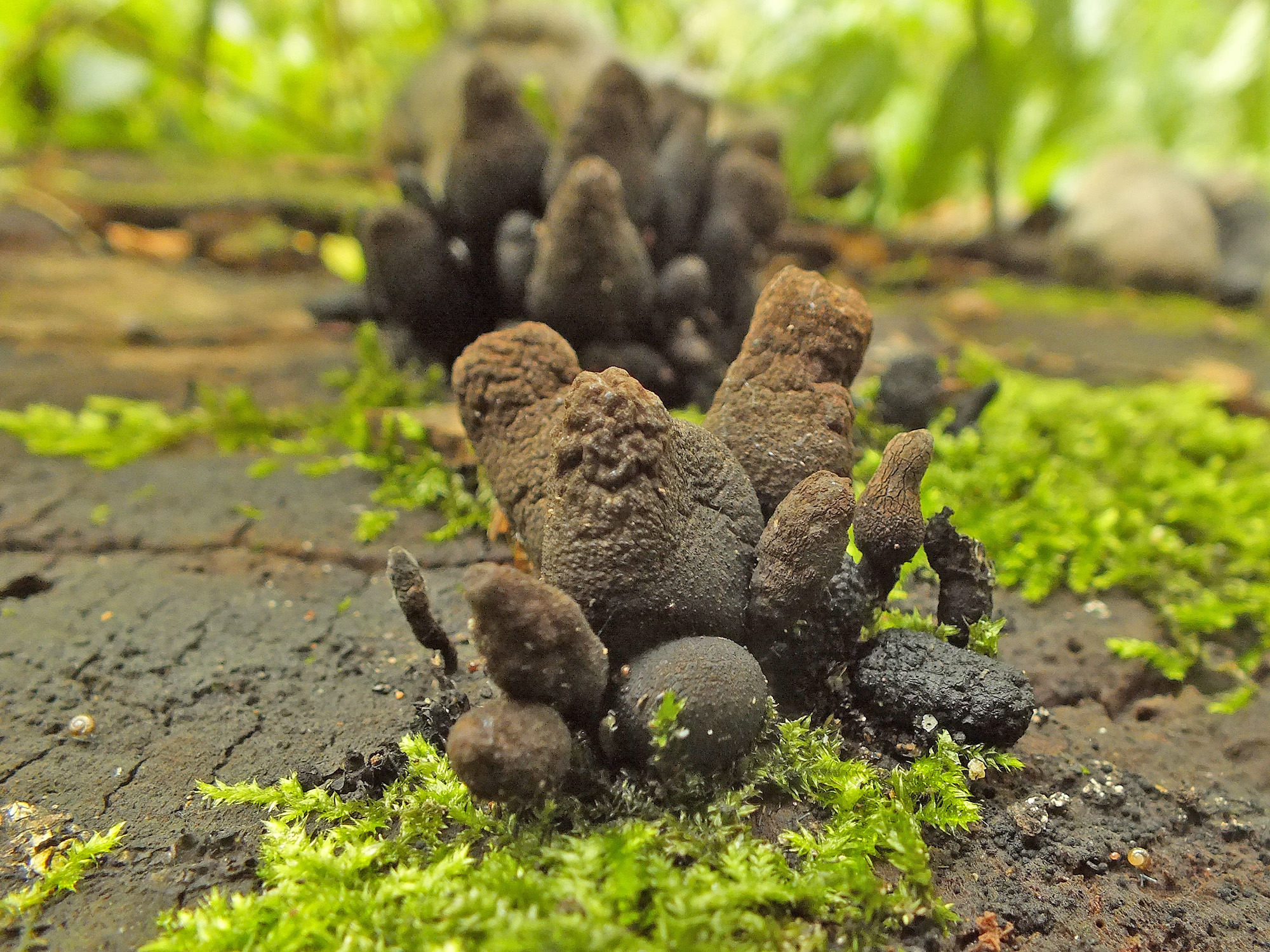Tiromitses snow-white: photo and description
| Name: | Tyromyces snow-white |
| Latin name: | Tyromyces chioneus |
| Type of: | Inedible |
| Synonyms: | Polyporus chioneus, Bjerkandera chionea, Leptoporus chioneus, Polystictus chioneus, Ungularia chionea, Leptoporus albellus subsp. chioneus, Boletus candidus Polyporus albellus |
| Systematics: |
|
Tyromyces snow-white is an annual saprophyte mushroom, which belongs to the Polyporovye family. It grows singly or in several copies, which eventually grow together. In official sources, it can be found as Tyromyces chioneus. Other names:
- Boletus cand> What does Tyromyces snow-white look like?
Tyromyces snow-white is distinguished by an unusual structure of the fruiting body, since it consists only of a convex sessile cap of a triangular section. Its size reaches 12 cm in width and does not exceed 8 cm in thickness. The edge is sharp, slightly wavy.
In young specimens, the surface is velvety, but as the fungus matures, it becomes completely naked, and in overripe Tyromyceses, wrinkled skin can be seen. At the initial stage of growth, the fruit body has a whitish tint, later it turns yellow and acquires a brown tint. In addition, clear black dots appear on the surface over time.
On the cut, the flesh is white, fleshy watery. When dry, it becomes dense fibrous, with little physical impact it begins to crumble. In addition, dry snow-white tyromyceus has an unpleasant sweet-sour smell, which is absent in fresh form.
The hymenophore of the snow-white tyromyceus is tubular. The pores are thin-walled, they can be rounded or angularly elongated. Initially, their color is snow-white, but when ripe they become yellowish-beige. Spores are smooth, cylindrical. Their size is 4-5 x 1.5-2 microns.

Tyromyces snow-white contributes to the development of white rot
Where and how it grows
The fruiting period of snow-white tyromyceus begins at the end of summer and lasts until late autumn. This fungus can be found on dead wood of deciduous trees, mainly on dry wood. Most often it is found on birch trunks, less often on pine and fir.
Tyromyces snow-white is widespread in the boreal zone of Europe, Asia, and also North America. In Russia, it is found from the west of the European part to the Far East.
Is the mushroom edible or not
White Tyromyces is considered inedible. It is strictly forbidden to eat it, both fresh and processed.
Doubles and their differences
By its external features, snow-white tyromyces can be confused with other mushrooms. Therefore, in order to be able to distinguish twins, you need to know their characteristic features.
The post is knitting. This twin is a member of the Fomitopsis family and is found everywhere. Its peculiarity is that young specimens are able to secrete drops of liquid, giving the impression that the mushroom is "crying". The twin is also an annual, but its fruit body is much larger and can reach 20 cm in diameter. The color of the post astringent is milky white. The pulp is juicy, fleshy, and tastes bitter. The mushroom is considered inedible. The fruiting period begins in July and lasts until the end of October. The official name is Postia stiptica.

Postia astringent grows mainly on the trunks of coniferous trees
Fissile aurantiporus. This twin is a close relative of snow-white tyromyceus and also belongs to the Polyporovye family. The fruit body is large, its width can be 20 cm. The mushroom has an outstretched shape in the form of a hoof. Its color is white with a pink tint. This species is considered inedible.The splitting aurantiporus grows on deciduous trees, mainly birches and aspens, and sometimes on apple trees. The official name is Aurantiporus fissilis.

Splitting aurantiporus has a very juicy white flesh
Conclusion
Snow-white Tyromyces belongs to the category of woody inedible mushrooms, so it is not popular among lovers of quiet hunting. But for mycologists it is of interest, since its properties have not been fully studied. Therefore, research continues on the medicinal properties of the mushroom.
Aurantiporus fissile
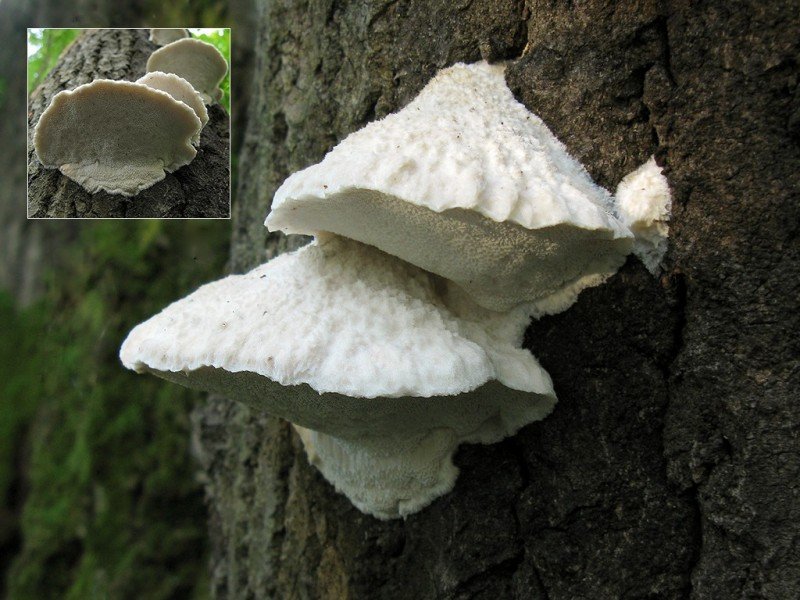
Fissile aurantiporus (Aurantiporus fissilis)
Synonyms: Tyromyces fissilis
Photo by: Tatiana Svetlova
Most often, the splitting tinder fungus aurantiporus is found on deciduous trees, preferring birch and aspen. Also, its solitary or accrete fruit bodies can be seen in the hollows and on the trunks of apple trees. Less commonly, the mushroom grows on oak, linden, and coniferous trees.
Aurantiporus fissilis is quite large in size - up to 20 centimeters in diameter, while the mushroom can be very heavy.
Fruit bodies are either prostrate or hoof-shaped, white, and the surface of the caps often has a pink tint. The fungus grows either singly or in whole rows along the trunk of the tree, growing together in some places with caps. When cut or broken, the caps quickly turn pink, even purple.
The hymenophore is very large and porous. The tubes of the hymenophore are whitish in color, rounded in shape.
The mushroom is distinguished by a very juicy fleshy pulp that has a white color.
Similar species
Outwardly, fragrant Trametes (Trametes suaveolens) and Spongipellis spumeus (Spongipellis spumeus) are very similar to it. But aurantiporus, which splits, has larger pores, as well as large fruiting bodies, which immediately distinguishes it from all tinder fungi of the genus Tyromyces and Postia.
Mushroom photo Aurantiporus fissile from questions in recognition:
Tyromyces chioneuscommonly known as white cheese tinder, is a species of tinder fungus. A widely distributed fungus, it has a circumpolar distribution, in temperate arctic pine forests, Asia, Europe and North America, causes white rot in dead hardwood trees, especially birch
Taxonomy
The variety was first described as Polyporus chioneus Elias Fries in 1815. It was passed on to the family Tyromyces Peter Carsten in 1881.
Tyromyces chioneus - type varieties Tyromyces... A definite epithet chioneus means "snow", referring to its white color. This is commonly known as "white cheese tinder fungus".
Description
Fruit bodies are semicircular to fan-shaped brackets that measure up to broadly wide with a thickness. The upper surface is initially white before aging to a yellowish or grayish color, and has a texture ranging from smooth to tomentose. The undersurface features white to cream, round to angular pores measuring 3-4 per millimeter. The flesh is soft and fleshy when young, but becomes hard and brittle when or when dry. It has a mild or indistinct taste and a pleasant aroma.
it has a white spore seal, and the spores are smooth, cylindrical, hyaline (transparent) with dimensions of 4–5 by 1.5–2 µm. The basidia are club-shaped, four-spored, and measure 10–15 by 4–5 µm; they have a clamp at their base. The hyphal system is dimitic, consisting of the generative and skeletal hyphae. The progenitor hyphae have clamps and intricate ramifications. Skeletal hyphae, in contrast, are thick-walled, sparsely branched, and measure 2-4.5 µm in diameter. Although cystidia are absent in hymenium, there are fused cystidioles (immature cystidia) measuring 15–20 by 4–5 µm.
Habitat and distribution
Tyromyces chioneus causes white rot in dead hardwood trees. Its most common host is birch. The species has a circumpolar distribution, in temperate arctic pine forests, including Asia, Europe and North America. In Greenland, this is common for Betula pubescens.


